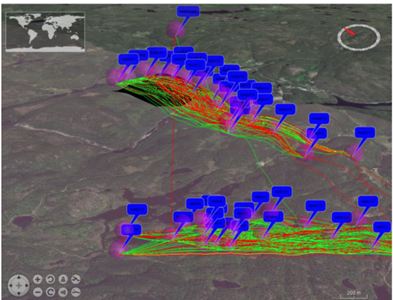Robust Network and Learning Architectures for Software Defined Coalitions
Military / Coalition Issue
Military missions increasingly rely on communication and data analytic capabilities to efficiently conduct operations. Such capabilities should be available within the tactical unit formations even when the latter have little or no connectivity to the network infrastructure and the back-end cloud facilities of the Army. Therefore, the network and data analytic solutions must be robust to network failures and fragmentation events as well as easy to deploy and re-deploy every time the connectivity in the tactical network changes.
Core idea and key achievements
A new architecture called Software Defined Coalitions (SDC) has been developed, which extends the existing Software Defined Networking (SDN), to support military missions. With SDC, the network is managed by a designated network entity, the controller, which is programmable and thus automates many network operations. If combined with Machine Learning (ML) methods, the controller can reach an even higher level of network automation and realize with relative ease sophisticated data analytic services such as prediction of enemy’s presence in a region through processing camera video feeds and other similar situation awareness services. Yet, the robustness of this solution can still be a problem since mobility and failures in the network may fragment the nodes from the controller rendering impossible their access to the ML model and the delivery of the required service. To address this challenge, we argue that both the network architecture of SDC and the ML architecture used in this context need to be carefully designed to be robust to network failures and fragmentation events.
Key achievements include:
- Robust network architecture for SDC based on the idea of hybrid operation that combines the benefits of two paradigms: (i) logically-centralized and programmable network control of SDC and (ii) adaptivity and responsiveness to failures of traditional distributed mobile ad hoc network (MANET) protocols (e.g., OLSR).

- Robust learning architecture for SDC that adopts a recently proposed family of Graph Attention (GAT) neural networks which are able to make predictions without model re-training even when network fragmentation events happen.
- Prototype of the proposed robust network and learning architecture to quantify the benefits for a situation awareness service using a real dataset (Anglova in the figure) of a tactical ad hoc network.
Implications for Defence
Bringing the concepts of SDC and ML from the strategic and network infrastructure levels all the way down to the tactical level, within the tactical unit formations, where network automation and intelligent data-driven decisions are needed the most.
Readiness & alternative Defence uses
Resources and references
- Poularakis, Konstantinos, et al. “Hybrid SDN control in mobile ad hoc networks.” 2019 IEEE International Conference on Smart Computing (SMARTCOMP). IEEE, 2019.
- Poularakis, Konstantinos, et al. “Flexible SDN control in tactical ad hoc networks.” Ad Hoc Networks 85 (2019): 71-80.
- Qin, Qiaofeng, et al. “Learning-aided SDC control in mobile ad hoc networks.” Artificial Intelligence and Machine Learning for Multi-Domain Operations Applications III. Vol. 11746. International Society for Optics and Photonics, 2021.
Organisations
Yale University, Imperial College, IBM US, IBM UK, ARL